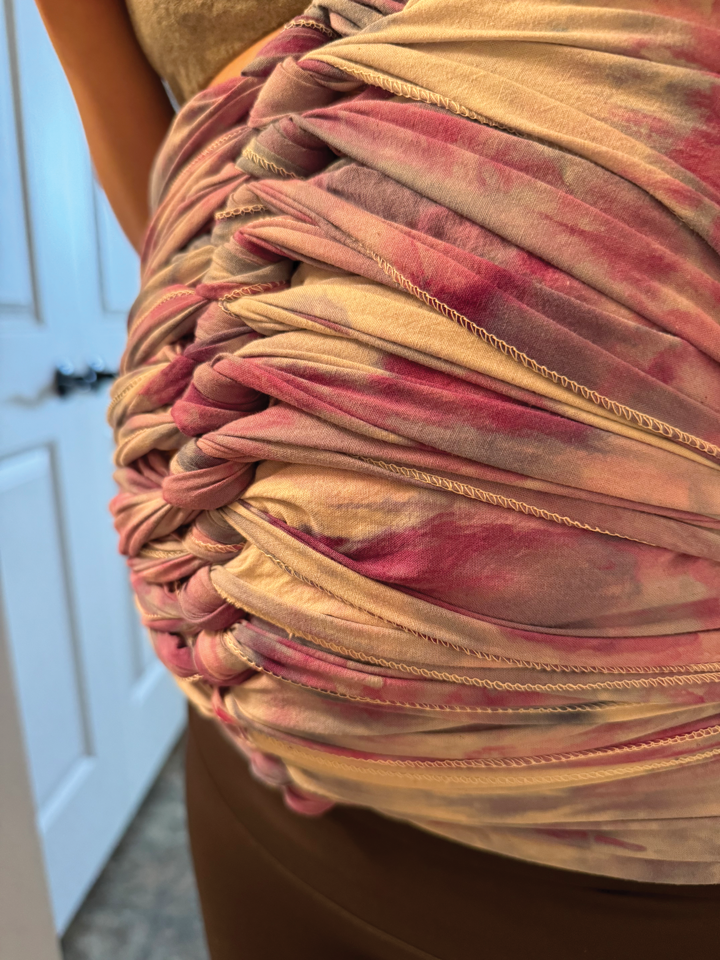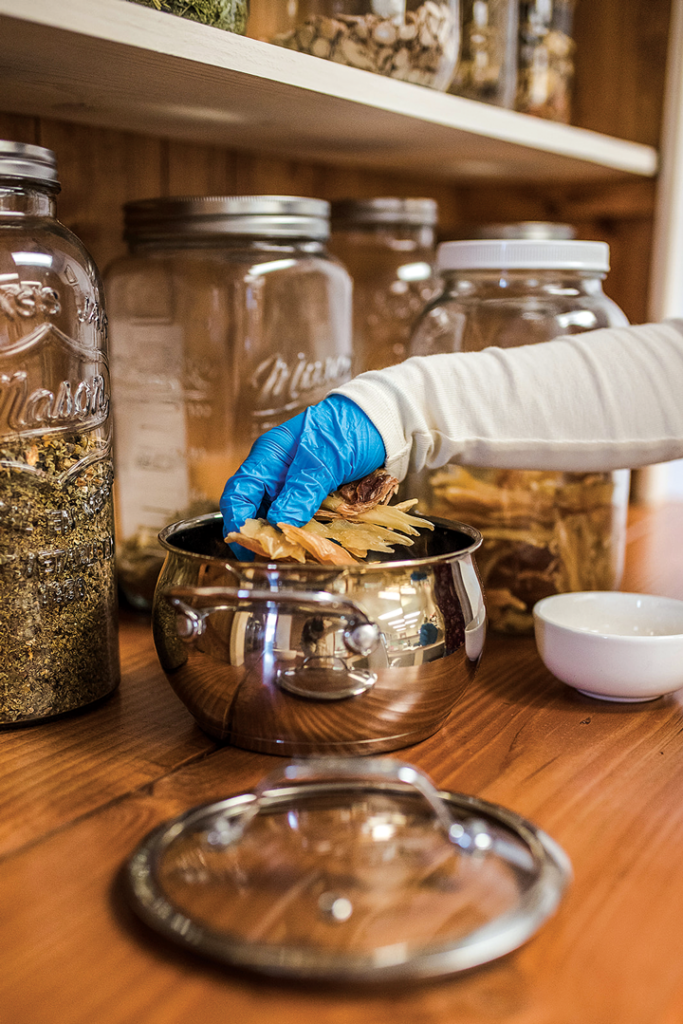During pregnancy, moms-to-be rely on their care providers’ guidance to ensure the new life they bring into the world is healthy. But the mother’s health is just as important, both before and after giving birth.
The period after labor, called “postpartum,” is often considered the fourth trimester, according to the American College of Obstetricians and Gynecologists, because it takes up to 12 weeks for a mother’s physical and mental health to return to pre-pregnancy conditions.
“The postpartum period is a time of transition, and often there’s a lack of support in the U.S. Other cultures don’t leave you alone with your baby. Here, there’s lots of isolation and you’re expected to get back to normal quickly,” says Julianne Curtis, a certified labor and bereavement doula and co-founder of the NOCO Doula Collective.
In addition to assisting laboring mothers, doulas nurture them postpartum so they can nurture their baby. “The goal is finding your new normal after giving birth,” Curtis says.

Insight Pelvic Health physical therapist Liesel Jay assesses a patient’s rib cage after she gave birth. Photo by Wild Bliss Photography.
The pelvic floor postpartum
One part of the body that endures stress during pregnancy and labor is the pelvic floor, a support structure of 19 voluntary muscles that contract and relax, says Dr. Julie Wallace, a physical therapist at Insight Pelvic Health in Loveland who specializes in pelvic floor treatment. The muscles can stretch and tear during delivery, and additional trauma can occur if forceps or other means are necessary to assist with the birth. Involuntary muscles (the ones you can’t control), like the bladder, uterus and rectum, can also be affected.
Wallace says that anyone in the postpartum phase—whether you’ve given birth vaginally or had a cesarean section—is a good candidate for pelvic floor therapy. If a woman has a C-section, the pelvic floor muscles never get the tactile sensation or cues when the baby comes out of the birth canal, she says, and those supportive muscles remain tight. The muscles supporting the bladder are also stretched during pregnancy, which can cause urinary incontinence. Without pelvic floor therapy, incontinence and a range of other issues can continue throughout a woman’s life.
Another area that is stressed during pregnancy is the abdominal muscle group that makes up what’s commonly called the “six-pack.” These stretch and separate to accommodate the growing uterus as the baby develops. That’s a good thing because when the muscles stretch, they reduce pressure on the pelvic floor. The separation, called diastasis recti, isn’t painful, but since the abdominal muscles are connected to and support the spine and pelvis, back pain can result from those muscles being stressed or too relaxed, Wallace says.
Dr. Katherine Somodi-Stephenson, an obstetrician and gynecologist at The Women’s Clinic of Northern Colorado, says that physicians commonly give referrals for physical therapy to treat pelvic floor issues after evaluating patients postpartum.
“It’s important for [care providers] to ask about and recognize these factors during the postpartum period, as well as hormonal experiences causing vaginal dryness,” Somodi-Stephenson says. “Some countries have pelvic floor physical therapy care automatically. Here in the U.S., it’s not standard, so we need to follow up with it. Even if people have pain with intercourse post-pregnancy, therapy is an important tool.”
Mechanics of pelvic floor therapy
Pelvic floor therapy addresses both the involuntary and voluntary muscles (and surrounding organs) through exercise and hands-on treatment. At Insight Pelvic Health, the hands-on therapy uses manual cues as targeted physical guidance to get muscles to relax or contract.
Working the side core muscles of the abdomen can bring them back together, Wallace says, and part of the therapy is teaching women how to work the muscles with their own hands to help them function as they should.
A mother’s success with pelvic floor therapy depends on her labor experience and history. If she was sexually abused or grew up in a home where talking openly about her pelvic area wasn’t acceptable, Wallace says it can take longer for her to get comfortable working these muscles.
“But if they’re into their body, it requires one session to get muscles activated, coordinated and relaxing,” she says.
Exercises include breathing techniques to coordinate the pelvic floor. Ideally, you should be able to relax the area when inhaling and contract when exhaling.
“We teach them to be able to feel without touching,” Wallace says, noting that the clinic’s success rate is 80-90 percent.
Kegel exercises—a method of tightening and lifting the pelvic muscles for three seconds or longer before releasing them slowly and repeating the process—have long been the go-to recommendation for women postpartum, but with limited success.
“There are simple Kegels or weighted Kegels with a Kegel ball or spherical device placed in the vagina,” Somodi-Stephenson says, though additional tools can create a better response.
Those include positive visualization, a meditative technique where the patient imagines a more comfortable scenario, used alongside a pelvic wand, an S-shaped device that creates a point of contact to allow increased blood supply and muscle release. There are also biofeedback exercises to monitor muscle strength and create awareness of what the muscles are doing in order to strengthen them.

Belly binding by NOCO Doula Collective.
Other postpartum therapies
Both Wallace and Curtis emphasize the importance of postpartum counseling and rest. Birthing doulas have been around as long as humans, Curtis says, but only 10 percent of women use them.
“Historically, doulas were considered to get in the way of medical care, but as providers have seen how we can help their patients, we’re getting buy-in,” she says. “There’s a financial aspect to that: Medicaid will start reimbursing doula support by mid-2024.”
Curtis also offers belly binding, a postpartum treatment that uses 17 yards of organic, hand-dyed muslin cotton to wrap a woman’s hips and torso.
“After birth, we have extra skin, the organs have shifted and we haven’t used our core in months,” she says. “Belly binding helps with core stabilization and lymphatic drainage and helps organs know where to go back to and stay. Binding can also reduce neck soreness during breastfeeding.”
Unlike Velcro abdominal binders (which Curtis says can put pressure on the pelvic floor and potentially cause prolapsed organs), belly binding is gentle. Moms can wrap the fabric in about 10 minutes and decide how tight they want it to be. Curtis recommends wearing the bind 10-12 hours a day for 40 days post-delivery. Belly binding provides support and core stabilization when turning or rising from a chair after C-sections, vaginal deliveries, bereavement losses, hysterectomies and gallbladder surgery.
Other doula services include lactation counseling, newborn care education for parents and overnight support to remedy lack of sleep, which Curtis says is a popular package.
___________________________________________________________________________________________
Postpartum Issues Helped by Pelvic Floor Therapy
Medical experts agree that pelvic floor therapy can help moms heal from:
1. Torn muscles during vaginal delivery and/or trauma if forceps or a vacuum are used.
2. Episiotomy, a surgical procedure to make room for the baby’s head as it exits the birth canal.
3. Stretched or stressed tissue, overly tender or overly lax muscles and muscles not returning to normal even after injuries incurred during birthing have been repaired.
Dr. Katherine Somodi-Stephenson, an obstetrician and gynecologist at The Women’s Clinic of Northern Colorado, says these postpartum issues occur in 30 percent of her patients, but they are underreported. She also says postpartum patients may experience prolapse.
Stretched or torn muscles may not naturally return to pre-pregnancy laxity and remain tight or loose, causing a host of problems, including leaking urine, frequent urination, difficulty starting the urine flow, rectal incontinence and uncontrollable gas. If the muscles remain tight, sexual intercourse can be painful, says Dr. Julie Wallace, physical therapist.
___________________________________________________________________________________________
Yoni Steaming: An Ancient Alternative Medicine
Meghan Gray (Peckinpaugh), a doctor of acupuncture and Chinese medicine at Balanced Thistle in Fort Collins, treats postpartum women with herbal vaginal (or “yoni”) steams. Along with addressing discharge, tearing and prolapse, the custom steams help the body release any retained placental tissue, which, if it remains undetected in the uterus, can cause low milk supply, she says. Steaming can also increase tissue circulation and help treat vaginal dryness.

Herbs for yoni steaming. Photo courtesy of Balanced Thistle
Steaming herbs are chosen to address patients’ individual concerns, along with the length and intensity of the steam. As an alternative medicine treatment requiring advanced knowledge and training (she had over four years of post-graduate school and an internship), Gray says the clinic cautions patients not to try steaming at home.
“A postpartum herbal prescription will have nourishing, lifting and blood-moving herbs, like astragalus (an anti-inflammatory plant root that jumpstarts the immune system), white peony, saffron and dong quai (a root in the parsley, celery and carrot family),” she says. The herbs are different from those used to treat bacterial infections and other health concerns.
The 30-minute steams are done in a private room. “The experience is lovely, warm and relaxing, and the herbs smell great,” Gray says.







